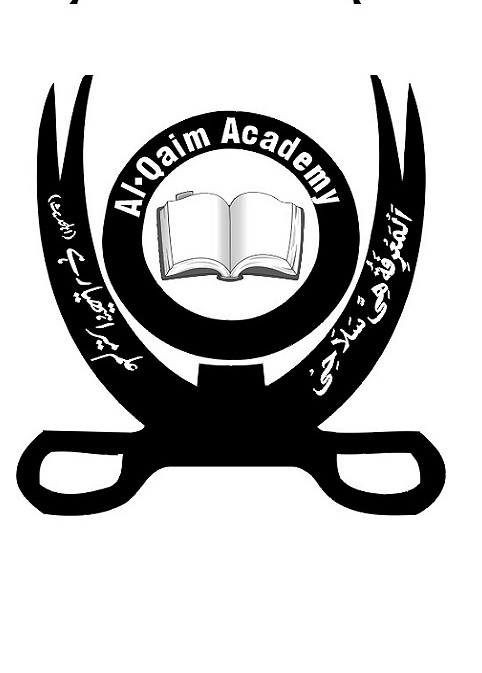education clipart has turned into an incredible asset for educators, understudies, and content makers. These visual assets, enveloping a great many pictures from school supplies to symbols and images, act as strong guides in passing on instructive messages really. In a time where capacities to focus are restricted and visual substance is principal, schooling clipart offers a method for making learning educational as well as connecting with and open. In this article, we’ll investigate the reason, types, advantages, and best practices for utilizing training clipart, as well as suggest quality hotspots for teachers and architects.
What Is an Education Clipart?
Education clipart consists of images designed specifically for educational purposes. Unlike general graphics, these images feature elements that directly relate to learning and academic environmentsFrom blackboards and pencils to globes and graduation covers, instruction clipart integrates images that convey instructive ideas and make recognizable, inviting visuals. These visuals are frequently bright and improved, making them effectively unmistakable and fitting for the two youngsters and grown-ups.
Clipart can likewise envelop more dynamic visuals, for example, symbols for thinking or images addressing logical ideas, which can make complex subjects more clear. By illustrating ideas visually, clipart complements textual information, aiding comprehension and memory.
Why Education Clipart Matters in Modern Learning
In a world overwhelmed by screens and quick moving media, schooling clipart gives an extension between complex substance and understudy commitment. Visual learning is known to improve maintenance and understanding, making data more straightforward to process. Clipart supports this by offering recognizable symbols that can summarize or emphasize key points. Moreover, it breaks up large amounts of text, making reading materials, presentations, or assignments more visually appealing and less intimidating.
Incorporating clipart into educational materials has also shown positive effects in digital and virtual learning. In online courses or e-learning platforms, where human interaction may be limited, clipart can add a personal and interactive touch, making learning feel less isolated and more enjoyable.
Types of Education Clipart

1. Classroom Objects:
This type incorporates blackboards, work areas, notice sheets, shelves, and different items normally tracked down in a study hall These images are great for setting a learning context and are ideal for introductory slides, classroom presentations, or themed posters.
2. School Supplies:
Pencils, note pads, rulers, erasers, rucksacks, and more are notorious images of training. These visuals function admirably in supporting subjects connected with readiness, review, and association, frequently pursuing them a well known decision for class kickoff plans.
3. Subject-Specific Icons:
Icons that represent different subjects like math, science, history, and language arts are excellent for subject-focused materials. For example, an atom icon for science or a globe for geography can help in clearly identifying topics and make it easier for students to associate certain symbols with specific content areas.
4. Learning Process Symbols:
These incorporate images like lights for thoughts, question marks for interest, and cog wheels for critical thinking. They are compelling in representing ideas like decisive reasoning, conceptualizing, and request, making theoretical ideas more substantial.
5. Technology and E-learning Icons:
With the rise of online education, technology icons such as laptops, tablets, and virtual classrooms are commonly used in e-learning content. These icons help signify the digital aspect of modern education, making them suitable for virtual lessons and online resources.
6. Motivational Icons and Symbols:
Clipart that incorporates smiley faces, approval, or “A+” images can be utilized to spur and emphatically build up understudies. These symbols add support and celebrate accomplishments, frequently utilized on remuneration declarations or complimentary standards.
Benefits of Using Education Clipart
1. Enhances Engagement:
Using clipart in educational materials captures students’ attention and makes learning content appear more appealing and less monotonous. Visual elements can serve as a hook to draw students into the lesson, particularly for younger audiences.
2. Facilitates Understanding:
By visually representing ideas, clipart simplifies complex concepts. Visual aids can support students in understanding and retaining information, as it enables them to form mental associations that go beyond words alone.
3. Encourages Creativity:
Adding visual elements to assignments, projects, or presentations can foster creativity. Students may feel more inclined to participate actively when they have colorful, inviting materials.
4. Supports Different Learning Styles:
Not all understudies gain proficiency the same way; some are visual students who benefit from seeing data spread out outwardly.. Clipart accommodates these learners by providing visual cues alongside text-based content.
5. Increases Memorability:
Images are often easier to recall than text, which is why clipart can improve memory retention. When students revisit the material, the visual associations they made with the clipart can help reinforce what they’ve learned.
Where to Find Quality Education Clipart
There are various resources available for finding education clipart, catering to both free and premium needs:
1. Free Sources:
- Pixabay: A large library of free images, including educational icons and symbols that are royalty-free.
- Unsplash:While it principally offers photography, you can find instructive themed pictures reasonable for introductions.
- OpenClipart:This site offers a scope of free clipart pictures explicitly for instructive use and doesn’t need attribution.
2. Premium Sources:
- Shutterstock: Known for its extensive library, Shutterstock offers a broad range of high-quality educational images and icons.
- Adobe Stock: With curated collections and unique images, Adobe Stock is ideal for those seeking diverse educational clipart options.
- Canva Pro: Canva has many education-themed clipart options, especially useful for creating professional presentations, infographics, or social media posts.
Best Practices for Using Education Clipart
1. Keep it Relevant:
Always ensure that the clipart you choose is relevant to the subject or topic. Avoid using random images that could distract from the primary content or confuse students.
2. Don’t Overcrowd the Page:
Using too many images on one page can overwhelm students and clutter the layout. Stick to a few relevant icons or symbols to keep the materials clean and easy to follow.
3. Choose Age-Appropriate Images:
Clipart ought to be appropriate for the age gathering of your understudies. For more youthful crowds, splendid tones and silly plans are normally viable, while more established understudies might see the value in additional refined, moderate symbols.
4. Use Consistent Styles:
When creating a series of materials, such as a workbook or presentation, aim for a consistent clipart style. This cohesion helps create a visually unified experience, preventing distractions.
5. Pay Attention to Licensing:
Assuming that you’re utilizing clipart from outside sources, consistently take a look at the permitting arrangements. Some clipart is free for individual use however requires attribution or a buy for business use.
Practical Applications of Education Clipart

1. In-Classroom Presentations:
Clipart can make slideshows outwardly engaging and more straightforward to follow.. A quick visual on a slide can help reinforce points and make information memorable.
2. Printable Worksheets and Activities:
Adding clipart to worksheets makes them more captivating for understudies. For example, math worksheets with clipart may use objects like apples or pencils to represent counting items, which is especially helpful for younger students.
3. Online Learning Platforms:
Clipart icons are ideal for e-learning modules, where students might spend hours in front of a screen. By breaking up the text with visual elements, clipart makes digital learning feel less tedious.
4. Classroom Decor and Posters:
Educational clipart is perfect for creating attractive classroom decor, such as motivational posters, subject labels, and educational reminders.
5. Student Projects and Assignments:
At the point when understudies are given the choice to consolidate clipart in their tasks, it allows them an opportunity to customize their work. Clipart can assist understudies with feeling a more prominent feeling of responsibility and pride in their ventures.
Conclusion
education clipart is a flexible, connecting with, and significant instrument that upholds both instructing and learning. By integrating visuals into instructive materials, educators and content makers can assist students with better comprehension, hold, and partake in their examples. Clipart is more than enhancement; a significant guide overcomes any barrier between complex thoughts and open learning. As innovation keeps on molding current training, the worth of all around planned, intentional clipart will just keep on developing.
FAQs
Q1: How can I use education clipart effectively in teaching materials?
A1: Keep it relevant, avoid overcrowding, and choose images that match the age and comprehension level of your audience.
Q2: Is clipart free to use?
A2: Many destinations offer free clipart for individual and instructive use, however it’s fundamental for check permitting arrangements, as some require attribution or a business permit.
Q3: What are the best sources for high-quality education clipart?
A3: Free choices incorporate Pixabay and OpenClipart, while premium decisions incorporate Shutterstock and Adobe Stock.
Q4: Why is education clipart beneficial for online learning?
A4: Clipart breaks up text, keeps students engaged, and can provide visual aids that make online lessons more enjoyable and comprehensible.
Q5: How does clipart improve student memory retention?
A5: Clipart helps by creating visual associations, which are easier to recall than plain text, thus aiding in memory retention.





